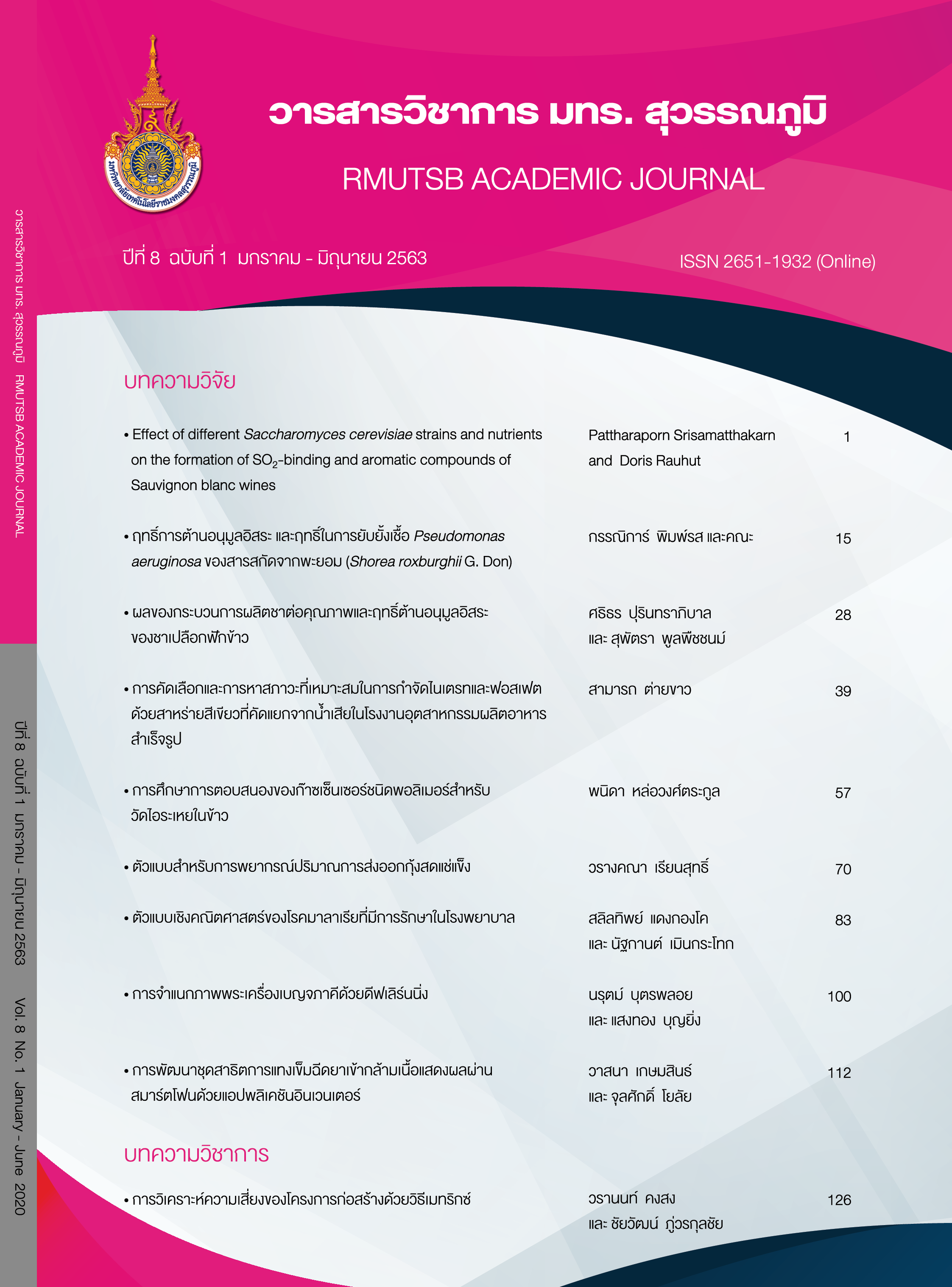Risk analysis in construction projects by matrix method
Main Article Content
Abstract
The goal of construction management is to manage with quality, time and cost of construction projects. The construction project experiences a delay, low quality, over budget due to negative factors cause of the direct stakeholders in the project. This research presents an analysis of the negative factor severity in the construction project by inquiring the direct stakeholder in the construction projects, consisting of 3 groups according to their roles and responsibilities. The analyzes in the severity by ranking with severity index, and risk level by matrix risk, were carried out to find negative factors in the quality, time, and cost that must be managed before getting a problem. The results showed that the negative factors must be immediately terminated in these three dimensions as follows, factors from the employer group (determining the clear scope and purpose of the construction work, delaying the decision-making process, and the construction changes), factors from the designer and inspector groups (the correct design, and roles and duties of inspector and controller), and factors from the contractor group (the labor shortage, and the contractor errors). The results showed that the relationship due to errors in the pre-construction phase directly affected the construction phase. Therefore, the negative factors occurring over the pre-construction phase should first be managed to prevent the impact going on during the construction phase.
Article Details
Published manuscript are the rights of their original owners and RMUTSB Academic Journal. The manuscript content belongs to the authors' idea, it is not the opinion of the journal's committee and not the responsibility of Rajamangala University of Technology Suvarnabhumi
References
Alofi, A., Kashiwagi, J., & Kashiwagi, D. (2016). The perception of the government and private sectors on the procurement system delivery method in Saudi Arabia. Procedia Engineering, 145, 1394-1401.
Antoniou, F., Aretoulis, G. N., Konstantinidis, D., & Kalfakakou, G. P. (2012). Selection criteria used for the choice of contract type for major highway construction projects. Procedia-Social and Behavioral Sciences, 48, 3508-3517.
Dziadosz, A., & Rejment, M. (2015). Risk analysis in construction project - chosen methods. Procedia Engineering, 122, 258-265.
Kongsong, W. (2017a). The factors of the conflict in construction works. International Journal of Engineering Research and Management, 4(8), 14-18.
Kongsong, W. (2017b). The reduction of the impacts in the contract management for government construction projects. International Journal of Applied Engineering Research, 12(23), 13310-13313.
Kongsong, W., & Pooworakulchai, C. (2018). Improving for construction contract management of government construction projects. International Journal of Civil Engineering and Technology, 9(7), 253-260.
Kongsong, W., & Pooworakulchai, C. (2019a). Lawsuit in the construction. RMUTSB Acad. J. (Humanities and Social Sciences), 4(1), 115-121. (in Thai)
Kongsong, W., & Pooworakulchai, C. (2019b). Cause of delay in the construction project by relative importance index method. The Journal of KMUTNB, 29(2), 270-281. (in Thai)
Marzouk, M. M., & El-Rasas, T. I. (2014). Analyzing delay causes in Egyptian construction projects. Journal of Advanced Research, 5, 49-55.
Ministry of Finance. The comptroller general’s department. The Standard Office of Government Procurement. (2014). Summary of public sector procurement, Fiscal Year B.E. 2555-2557. Reterived 21 December 2016, from http://www.gprocurement.go.th/wps/wcm/connect/7a15880045584724842ea6daee6bf126/Report+57_Q3.pdf?MOD=AJPERES, 2014
Mitkus, S., & Mitkus, T. (2014). Causes of conflicts in a construction industry: a communicational approach. Procedia-Social and Behavioral Sciences, 110, 777-786.
Otairu, A. G., Umar, A. A., Zawawi, N. A. W. A., Sodangi, M., & Hammad, D. B. (2014). Slow adoption of PPPs in developing countries: Survey of Nigerian construction professionals. Procedia Engineering, 77, 188-195.
Peckiene, A., Komarovska, A, & Ustinovicius, L. (2013). Overview of risk allocation between construction parties. Procedia Engineering, 57, 889-894.
Pooworakulchai, C., Kongsong, W., & Kongbenjapuch, K. (2017). Affecting on contract administration in government construction projects. International Journal of Applied Engineering Research, 12(9), 2079-2086.
Polat, G., Okay, F., & Eray, E. (2014). Factors affection cost overruns in micro-scaled construction companies. Procedia Engineering, 85, 428-435.
Toth, T., & Sebestyen, Z. (2015). Time-varying risks of construction projects. Procedia Engineering, 123, 565-573.


